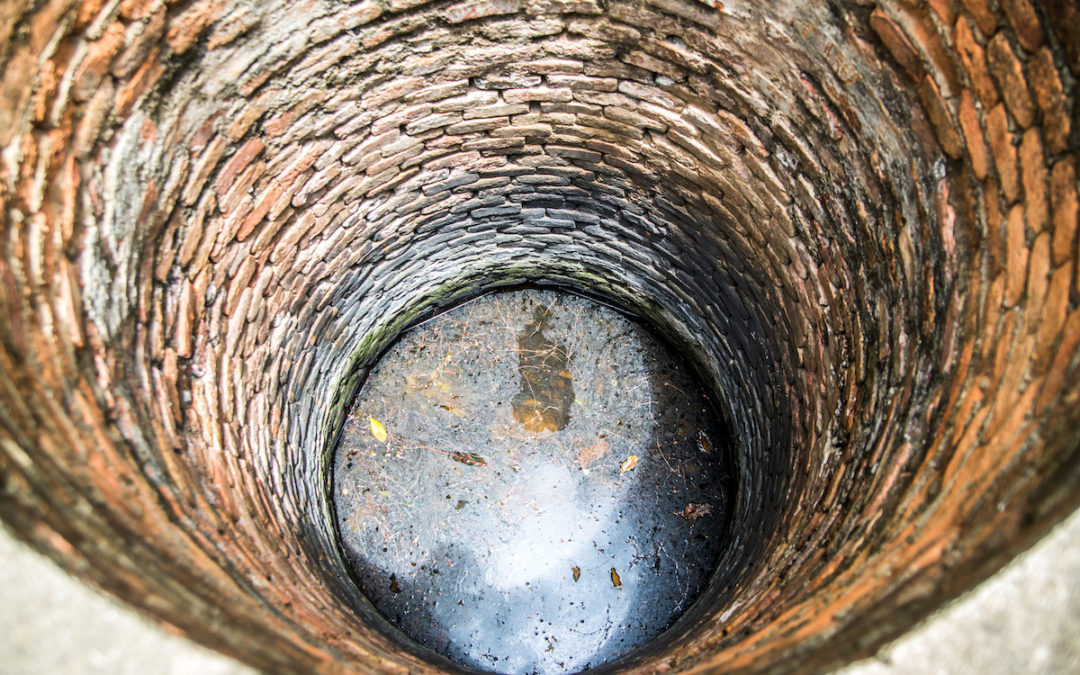Drinking Water Contamination: Millions Of Americans Affected, According To New Report

Table of Contents
Sources of Drinking Water Contamination in the US
The sources of contamination impacting our drinking water are multifaceted and alarming. From aging infrastructure to industrial pollutants, the threats are widespread.
Lead Contamination
Lead contamination in drinking water remains a persistent and serious problem, especially in older communities with aging water infrastructure. Lead pipes, commonly found in homes built before 1986, leach lead into the water supply, posing severe health risks.
- Health Risks: Lead exposure, particularly in children, can cause irreversible developmental delays, learning disabilities, and behavioral problems. It can also lead to neurological damage and kidney problems in adults.
- Affected Areas: Many older cities across the US, including Flint, Michigan, have experienced significant lead contamination crises. These events highlight the urgent need for widespread lead pipe replacement.
- Lead Pipe Replacement: While many communities are undertaking lead pipe replacement programs, the process is often slow, expensive, and insufficient to address the pervasive nature of the problem. Effective and comprehensive solutions are essential to mitigating this ongoing threat.
PFAS (Per- and Polyfluoroalkyl Substances) Contamination
PFAS, often called "forever chemicals," are a group of man-made chemicals that persist in the environment and our bodies for extended periods. Their presence in drinking water is a growing concern.
- Sources: PFAS contamination stems from various sources, including firefighting foam used at airports and military bases, industrial discharges, and certain manufacturing processes.
- Health Effects: Studies link PFAS exposure to various health problems, including liver cancer, immune deficiencies, and thyroid disorders. The long-term effects of PFAS exposure are still being investigated, but the preliminary findings are deeply troubling.
- Filtration Challenges: Effectively removing PFAS from drinking water is exceptionally difficult, requiring specialized filtration systems that are often expensive and not readily accessible to all.
Microplastics in Drinking Water
The emerging threat of microplastics in drinking water is raising serious concerns about their potential health impacts. Microplastics are tiny plastic particles less than 5 millimeters in size.
- Sources: These particles originate from a variety of sources, including the breakdown of larger plastic debris, synthetic clothing fibers, and industrial processes. They're pervasive in our environment and are increasingly found in drinking water sources.
- Health Effects: Research is ongoing, but studies suggest that ingesting microplastics can lead to inflammation, cellular damage, and potential hormonal disruption. The long-term effects are yet to be fully understood.
- Filtration Limitations: Standard water filtration systems are often ineffective at removing microplastics, underscoring the need for innovative solutions and stricter regulations to reduce plastic pollution.
Agricultural Runoff
Agricultural practices significantly contribute to water contamination through the runoff of fertilizers and pesticides.
- Nitrate Contamination: Excessive use of nitrogen-based fertilizers leads to nitrate contamination, which can cause health problems such as “blue baby syndrome” (methemoglobinemia) in infants. High nitrate levels can also be linked to certain cancers.
- Pesticide Runoff: Pesticides used in agriculture contaminate water sources, harming aquatic life and potentially impacting human health through ingestion. Long-term exposure to pesticides is associated with a range of health problems.
- Sustainable Farming Practices: Implementing sustainable farming techniques, such as reduced fertilizer use and integrated pest management, is crucial for minimizing agricultural runoff and protecting our water resources.
Health Consequences of Contaminated Drinking Water
The health consequences of drinking contaminated water are significant and far-reaching, impacting individuals of all ages.
Short-Term Effects
Short-term effects of drinking contaminated water can include:
- Nausea
- Vomiting
- Diarrhea
- Dehydration
The severity of these symptoms varies depending on the type and concentration of contaminants.
Long-Term Effects
Long-term exposure to contaminated water can lead to severe health problems, including:
- Cancer (e.g., bladder cancer, liver cancer)
- Kidney disease
- Neurological damage
- Developmental problems (particularly in children)
The link between specific contaminants and long-term health issues is a focus of ongoing research.
Protecting Yourself from Drinking Water Contamination
Protecting yourself and your family from the dangers of contaminated drinking water requires proactive measures.
Water Filtration
Investing in a high-quality water filter is a crucial step. Different filters address specific contaminants:
- Carbon filters: Effective at removing chlorine and other organic compounds.
- Reverse osmosis (RO) filters: Highly effective at removing lead, sediment, and other contaminants.
- Ultraviolet (UV) filters: Kill bacteria and viruses.
Choosing the right filter depends on the specific contaminants present in your water supply.
Bottled Water
Bottled water offers a potential alternative, but it comes with its own drawbacks:
- Environmental Concerns: The production and disposal of plastic bottles contribute significantly to environmental pollution.
- Cost: Bottled water is generally more expensive than filtered tap water.
Careful consideration of the environmental and economic implications is essential.
Advocating for Change
Contacting your elected officials and supporting organizations dedicated to improving water quality is vital:
- Contact your local and state representatives to urge them to support legislation that improves water infrastructure and strengthens water quality regulations.
- Support organizations working to ensure safe and clean drinking water for all. (Include links to relevant organizations here).
Your voice matters in pushing for change and ensuring access to safe drinking water for all.
Conclusion
The new report paints a stark picture: drinking water contamination is a pervasive and serious threat impacting millions of Americans, with severe implications for public health. The sources of contamination are diverse—from lead pipes and forever chemicals to microplastics and agricultural runoff—and the consequences range from immediate illness to long-term health problems. Protecting yourself requires taking proactive steps, including investing in appropriate water filtration systems and advocating for change. Let's work together to ensure access to clean, safe drinking water for everyone and demand better water quality and improved infrastructure to combat drinking water contamination across the nation. Demand safe drinking water, ensure water quality, and prioritize drinking water safety for all.

Featured Posts
-
 Padres Fall To Rays In Complete Series Sweep Fm 96 9 Highlights
May 16, 2025
Padres Fall To Rays In Complete Series Sweep Fm 96 9 Highlights
May 16, 2025 -
 Analysts See Nikes Turnaround Taking Hold Based On Foot Locker Earnings
May 16, 2025
Analysts See Nikes Turnaround Taking Hold Based On Foot Locker Earnings
May 16, 2025 -
 Foot Lockers New Global Headquarters A Florida Move
May 16, 2025
Foot Lockers New Global Headquarters A Florida Move
May 16, 2025 -
 Venezia Vs Napoles Transmision En Directo
May 16, 2025
Venezia Vs Napoles Transmision En Directo
May 16, 2025 -
 Foot Locker Sneaker Sale Nike Air Dunks Jordans And More Up To 40 Off
May 16, 2025
Foot Locker Sneaker Sale Nike Air Dunks Jordans And More Up To 40 Off
May 16, 2025
